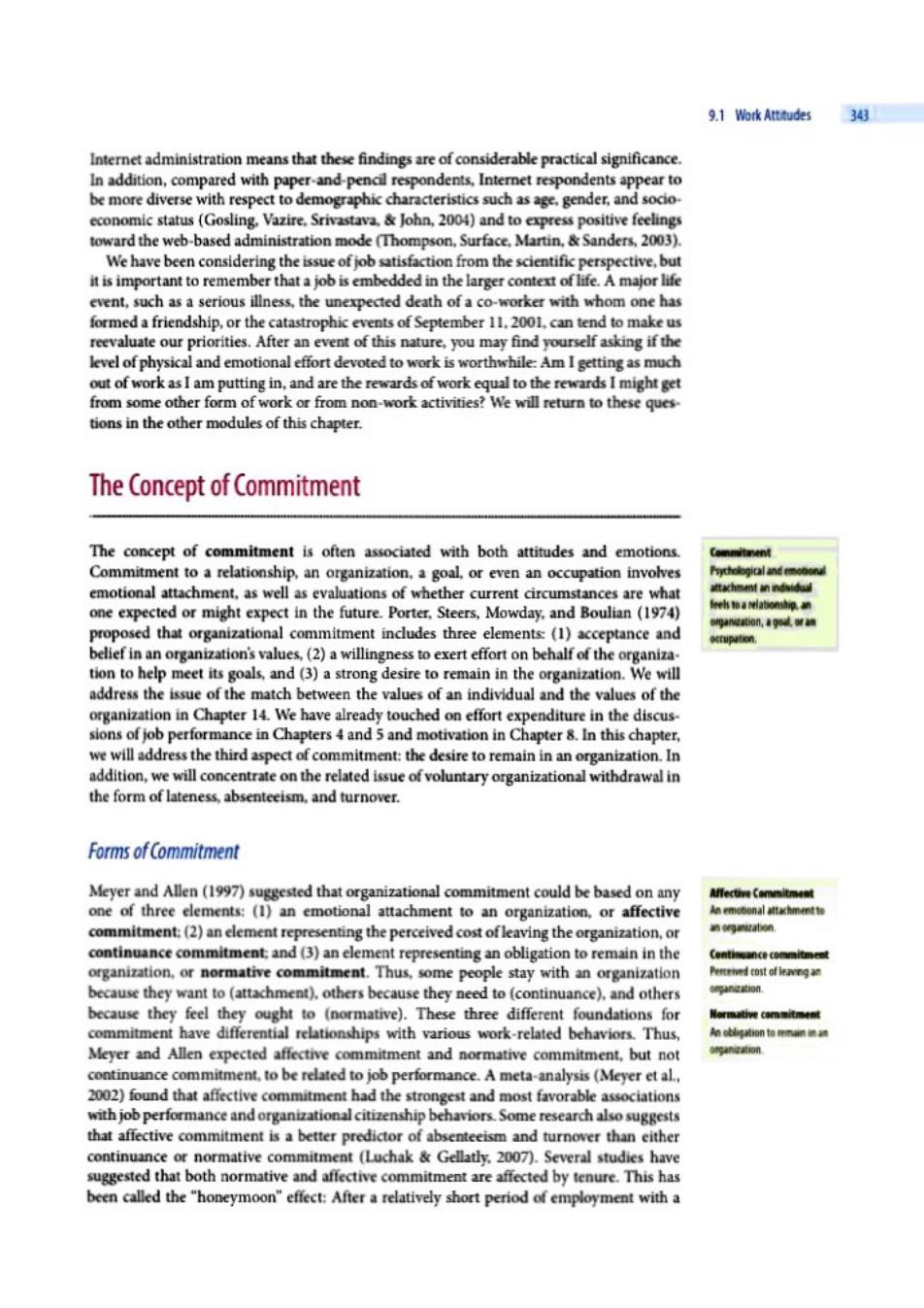正在加载图片...

9.16kAtt山ds 343 Internet administration means that these findings are of considerable practical significance. In addition,compared with paper-and-pencil respondents,Internet respondents appear to be more diverse with respect to demographic characteristics such as age,gender,and socio- economic status(Gosling.Vazire.Srivastava.John,2004)and to express positive feelings toward the web-based administration mode (Thompson.Surface.Martin.Sanders,2003). We have been considering the issue of job satisfaction from the scientific perspective,but it is important to remember that a job is embedded in the larger context of life.A major life event,such as a serious illness,the unexpected death of a co-worker with whom one has formed a friendship,or the catastrophic events of September 11.2001.can tend to make us reevaluate our priorities.After an event of this nature,you may find yourself asking if the level of physical and emotional effort devoted to work is worthwhile:Am I getting as much out of work as I am putting in,and are the rewards of work equal to the rewards I might get from some other form of work or from non-work activities?We will return to these ques. tions in the other modules of this chapter. The Concept of Commitment The concept of commitment is often associated with both attitudes and emotions. Commitment to a relationship,an organization.a goal,or even an occupation involves emotional attachment,as well as evaluations of whether current circumstances are what one expected or might expect in the future.Porter,Steers,Mowday.and Boulian(1974) eels toa relationthig.an 6四une0n,49ed3第n proposed that organizational commitment includes three elements:(1)acceptance and ecrupation belief in an organization's values,(2)a willingness to exert effort on behalf of the organiza. tion to help meet its goals,and (3)a strong desire to remain in the organization.We will address the issue of the match between the values of an individual and the values of the organization in Chapter 14.We have already touched on effort expenditure in the discus- sions of job performance in Chapters 4 and 5 and motivation in Chapter 8.In this chapter, we will address the third aspect of commitment:the desire to remain in an organization.In addition,we will concentrate on the related issue of voluntary organizational withdrawal in the form of lateness,absenteeism,and turnover. Forms of Commitment Meyer and Allen(1997)suggested that organizational commitment could be based on any Affective Cammitment one of three elements:(1)an emotional attachment to an organization,or affective n emobonal attachment每 commitment:(2)an element representing the perceived cost ofleaving the organization.or 的9出a计0M. continuance commitment:and (3)an element representing an obligation to remain in the Continuance commmitment organization,or normative commitment.Thus,some people stay with an organization Pertetved cost of leavngan because they want to (attachment).others because they need to (continuance).and others because they feel they ought to (normative).These three different foundations for Hormative com mitment commitment have differential relationships with various work-related behaviors.Thus, Meyer and Allen expected affective commitment and normative commitment,but not continuance commitment,to be related to job performance.A meta-analysis (Meyer et al., 2002)found that affective commitment had the strongest and most favorable associations with job performance and organizational citizenship behaviors.Some research also suggests that affective commitment is a better predictor of absenteeism and turnover than either continuance or normative commitment (Luchak Gellatly.2007).Several studies have suggested that both normative and affective commitment are affected by tenure.This has been called the "honeymoon"effect:After a relatively short period of employment with a